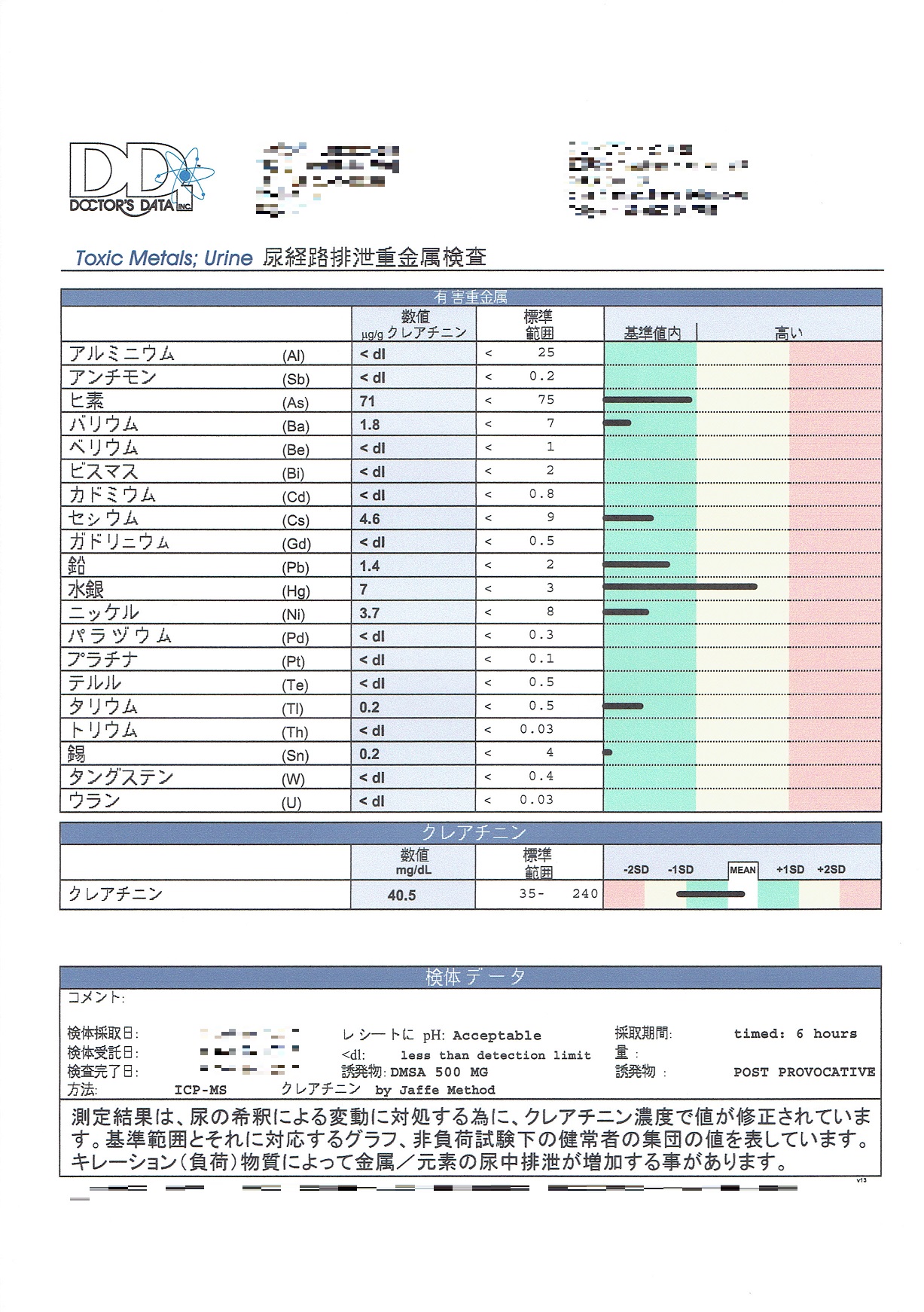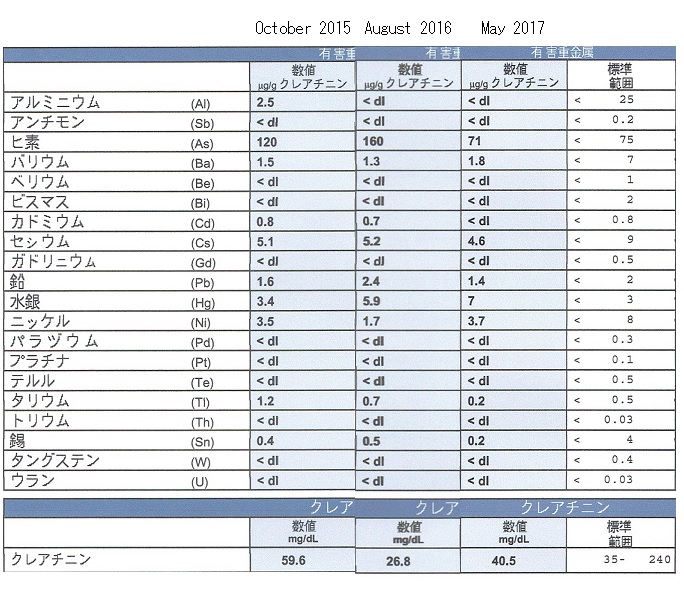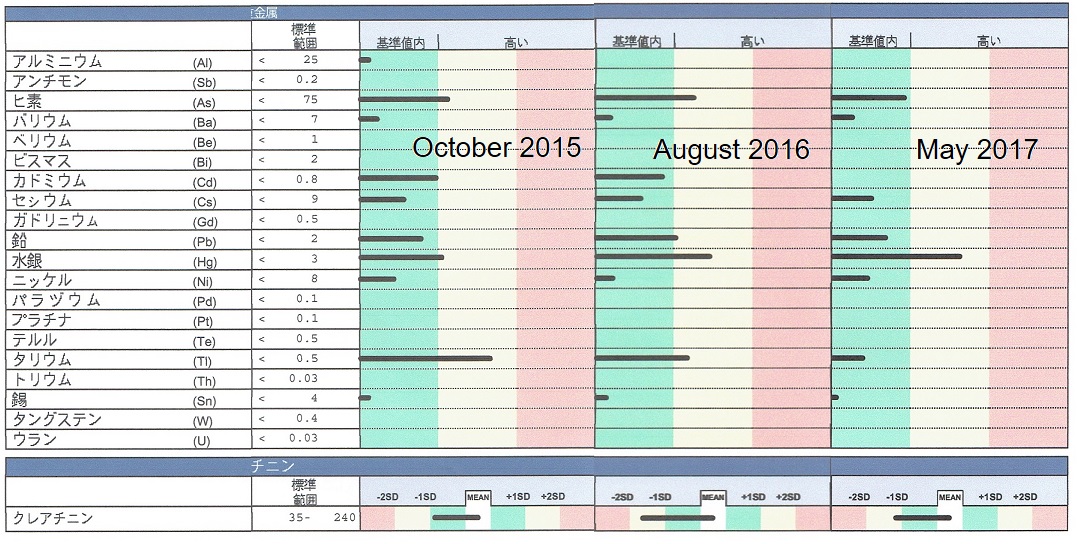
table of contents
Urinary excretion heavy metal test
Urinary excretion heavy metal test results in May 2017
Excerpt from record 18

Urinary excretion heavy metal test
Harmful heavy metal
Numerical value,Standard range,Within standard value,high
Aluminum
Antimony
Arsenic
Barium
Beryllium
Bismuth
Cadmium
Cesium
Gadolinium
Lead
Mercury
Nickel
Palladium
Platinum
Tellurium
Thallium
Thorium
Tin
Tungsten
Uranium
Creatinine
Creatinine
Sample data
The determination result is corrected by the creatinine concentration, taking into consideration the fluctuation due to urine dilution.
It shows the reference range and the corresponding graph, and the value of the population of healthy subjects under the unloaded test.
Chelation substances may increase urinary excretion of metals/elements.
Comparison of test results
The comparison data are the data for October 2015, August 2016, and May 2017.
The left is data for October 2015, the middle is data for August 2016, and the right is data for May 2017.
Urinary excretion Heavy metal test 20 items compared.
Numerical values and graphs are displayed separately.

Aluminum 2 5 → <dl → <dl No detection
Antimony <dl → <dl → <dl No detection
Arsenic 120 → 160 → 71 Go down
Barium 1 5 → 1 3 → 1 8 Go up
Beryllium <dl → <dl → <dl No detection
Bismuth <dl → <dl → <dl No detection
Cadmium 0 8 → 0 7 → <dl No detection
Cesium 5 1 → 5 2 → <dl No detection
Gadolinium <dl → <dl → <dl No detection
Lead 1 6 → 2 4 → 1 4 Go down
Mercury 3 4 → 5 9 → 7 Go up
Nickel 3 5 → 1 7 → 3 7 Go up
Palladium <dl → <dl → <dl No detection
Platinum <dl → <dl → <dl No detection
Tellurium <dl → <dl → <dl No detection
Thallium 1 2 → 0 7 → 0 2 Go down
Thorium <dl → <dl → <dl No detection
Tin 0 4 → 0 5 → 0 2 Go down
Tungsten <dl → <dl → <dl No detection
Uranium <dl → <dl → <dl No detection
Barium and nickel have increased in value, but there is no problem because they are within the standard range.
Only mercury has exceeded the standard range.
Other heavy metals are within the standard range.

Arsenic, which had a high value, has recovered to within the standard range.
Barium is within the standard value, so there is no problem.
Cadmium, which had a high value, has not been emitted and is recovering.
Cesium is also within the standard value, so there is no problem.
There is no problem because lead has come to converge within the standard value.
The value of mercury is gradually increasing.
Nickel is within the standard value, so there is no problem.
Thallium, which had a high numerical value, has recovered to within the standard value.
There is no problem because tin has remained at the standard value.
The results of the third inspection revealed that heavy metals other than mercury are decreasing due to chelation.
Regarding mercury, it seems that it has become possible to gradually discharge what has accumulated to the outside.
It is thought that there is a chelation effect.